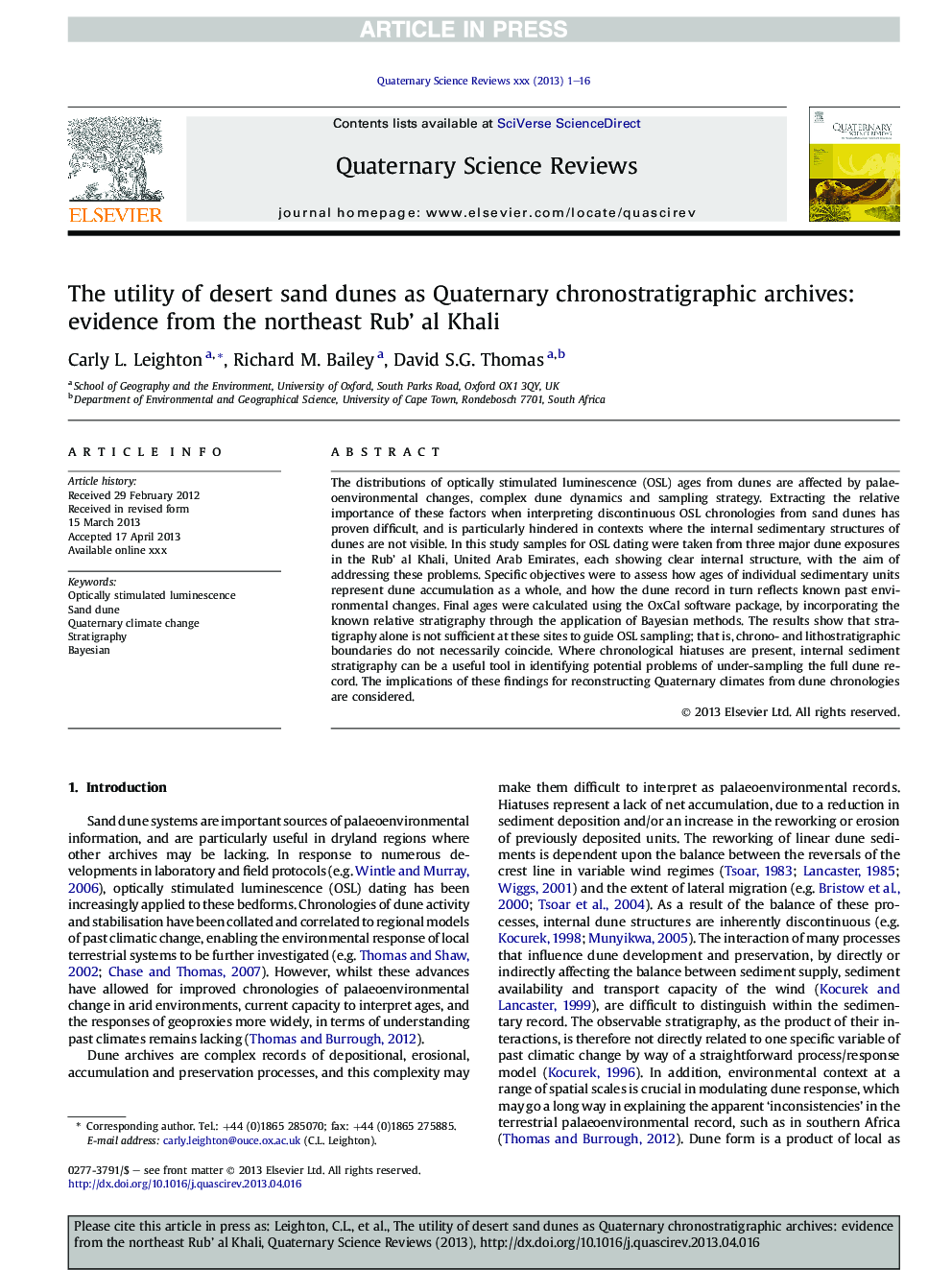| Article ID | Journal | Published Year | Pages | File Type |
|---|---|---|---|---|
| 6445658 | Quaternary Science Reviews | 2013 | 16 Pages |
Abstract
The distributions of optically stimulated luminescence (OSL) ages from dunes are affected by palaeoenvironmental changes, complex dune dynamics and sampling strategy. Extracting the relative importance of these factors when interpreting discontinuous OSL chronologies from sand dunes has proven difficult, and is particularly hindered in contexts where the internal sedimentary structures of dunes are not visible. In this study samples for OSL dating were taken from three major dune exposures in the Rub' al Khali, United Arab Emirates, each showing clear internal structure, with the aim of addressing these problems. Specific objectives were to assess how ages of individual sedimentary units represent dune accumulation as a whole, and how the dune record in turn reflects known past environmental changes. Final ages were calculated using the OxCal software package, by incorporating the known relative stratigraphy through the application of Bayesian methods. The results show that stratigraphy alone is not sufficient at these sites to guide OSL sampling; that is, chrono- and lithostratigraphic boundaries do not necessarily coincide. Where chronological hiatuses are present, internal sediment stratigraphy can be a useful tool in identifying potential problems of under-sampling the full dune record. The implications of these findings for reconstructing Quaternary climates from dune chronologies are considered.
Keywords
Related Topics
Physical Sciences and Engineering
Earth and Planetary Sciences
Geology
Authors
Carly L. Leighton, Richard M. Bailey, David S.G. Thomas,
